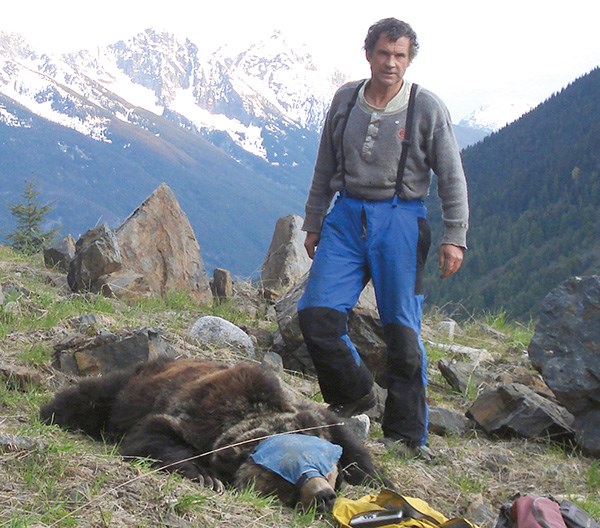People have been concerned over the status of grizzly bears in British Columbia for many decades. Back in 1989, there was so much publicity over these bears that the students of Mamquam Elementary School raised over $300 to spend on grizzly bears.
Not knowing what to do with this money, they decided to buy a radio collar so that Fred Hovey, a Ph.D. student at Simon Fraser University, could put it on a grizzly bear. Hovey worked on my grizzly project in the Flathead Valley in southeastern British Columbia, and on May 19, 1990, we put the collar on a two-year old female bear and named her Mammie after Mamquam Elementary School.
In 1990, I already knew Mammie a little. In late April of 1988, I saw her shortly after she first emerged from a dark den and entered the world of snow and sunshine for the first time. She and two brothers, Luke and Tyson, were part of their mother Elspeth’s fifth litter of cubs. Elspeth was a very productive mother grizzly and had 17 cubs in her life.
Like most young female grizzly bears, Mammie didn’t leave the area where she was born but remained in the southern Flathead valley and followed the patterns she learned from her mother. In springtime, she was found most often wandering along low-gradient creek bottoms feeding on horse tails, grasses, and cow parsnip. In mid-July she would eat buffalo berries when they were abundant but in August, she moved high into the mountains to feed on huckleberries that were very abundant when she was young.
In 1995, when she was seven years old, Mammie had her first litter of just one cub. A few years later the huckleberry crop was beginning to decline, and over the next 20 years, berries would never be as abundant as in the 1980s. Mammie would not be as productive as her mother, and I think only had four cubs in three litters, although I missed tracking her for three years. Mammie was luckier, or maybe smarter than her two brothers, who both ended up being shot by hunters. Tyson grew to be a huge male, and I was told was a “record book” bear.
Last week, the modern satellite up-link collar that I had put on Mammie last year told us that she had died on June 14 at 28 years of age. She had been eating cow parsnip along the same beaver dam where she, her mother and two brothers spent time many years ago. There, it appears, she just ran out of life.
The students of Mamquam Elementary who raised the money for Mammie’s first collar must be in their 30s now. Some likely have kids of their own going to school. I want to thank you all for your gift so many years ago. And, if you are still concerned, the population of bears in the Flathead increased for a couple of decades, and then declined for about 10 years – but don’t worry, it’s on the increase again.
More importantly for all of you is that the grizzly population just to the north of Squamish and northwest of Whistler is gradually expanding and the Sea to Sky area is now one of the most important places on the continent for grizzly bear conservation. Let’s look after the big bears and their habitat here.
Editor’s note: Bruce McLellan, who holds a doctorate, is part of the IUCN Bear Specialist Group: Redlist Authority.




